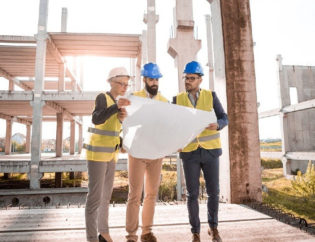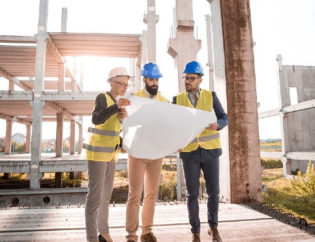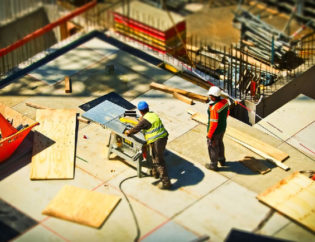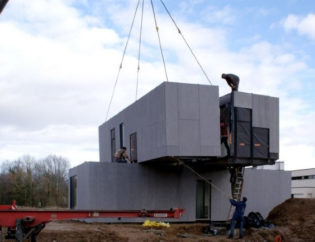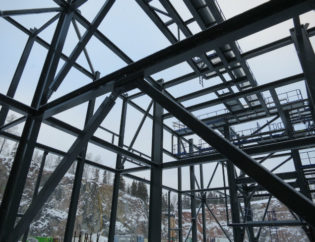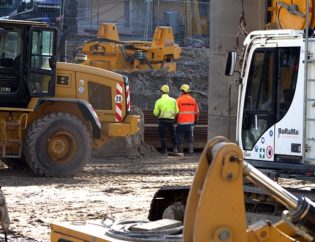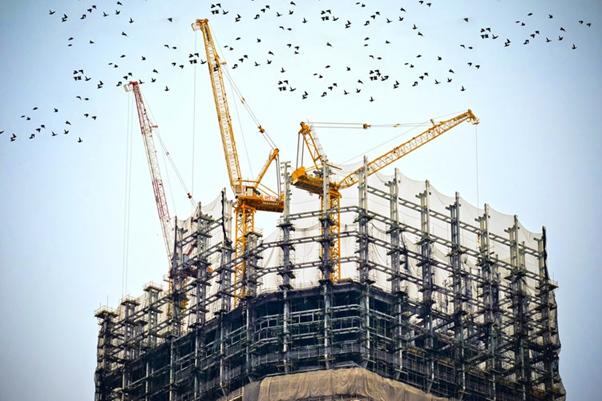
We’ve come a long way with the method of constructing various structures around us. Before modern engineering, the world of architecture consisted of wood, adobe, and thatch. But today, we have cities filled with tall buildings that almost touch the sky. Skilled architects manipulate the use of concrete and steel to erect these beautiful structures. Steel has always been the preferred choice for these promising and alluring steel buildings. So let’s just cut to the chase and understand the common types of steel that you can use during pre-engineered steel construction building.
Carbon Steel
Carbon steel is a combination of carbon, manganese, silicon, and a mixture of sulfur and phosphorus as impurities. The content of carbon present in the carbon steel determines this alloy’s strength and ductility. So, when the carbon content rises, the alloy becomes harder and stronger.
Benefits
- Available in different forms to meet every client’s requirements.
- Has high resistance to corrosion, scaling, heat, and fire.
- Superior durability and strength.
- Tougher and more elastic than mild steel.
- Easily fabricated into different forms.
- Highly used for water purposes such as plumbing.
Application
Since carbon is the main alloying component, based on the amount of carbon constituted, there are four main types of carbon steel.
– Low Carbon Steel
It is comparatively cheaper than other steel materials. It is used to make deep drawing parts, chains, pipes, wires, nails, and other machine parts.
– Medium Carbon Steel
It is quite a strong variety of steel resistant to basic wear and tear. It is used to make axles, screws, cylinders, crankshafts, and heat-treated machine parts.
– High Carbon Steel
This material is ideal for manufacturing high strength springs, rope wires, screwdrivers, hammers, wrenches, and edge tools.
– Very High Carbon Steel
This is a very hard material and is used for industrial purposes such as manufacturing punches, shear blades, springs, milling cutters, razors, axles, and other tools.
Alloy Steel
It is a mixture of metals like manganese, silicon, nickel, copper, chromium, and aluminum. Based on the percentage of metals, properties such as ductility, corrosion resistance, and weldability can vary. Alloy steel has components that are better than carbon steel.
Benefits
- Greater hardenability.
- Tough and strong material.
- Less distortion and cracking.
- Less grain growth.
- High resistance against temperature.
- Cheaper steel building alternative.
Application
There are two types of alloy steel:
– High Alloy Steel
This material has a high percentage of alloying elements. High alloy steel is used to store liquids and mining materials, chemicals or pharmacy equipment during construction.
– Low Alloy Steel
This material has a low percentage of alloying elements. Low alloy steel is useful for a variety of projects that include seamless rolled ring forging and studding outlets.
Structural Steel
Structural steel is used for steel buildings. It is fabricated with a specific shape and chemical composition to suit the application requirements of the project. Structural steel is used to make various shapes like Z-shape, I-beam, L-shape, HSS-shape, T-shape, rods, etc. These steel sections are made in various sizes and gauges by hot and cold rolling method, unlike others that are formed by welding flat or bent plates together.
Benefits
- Withstands harsh conditions.
- Transforms in any shape and size.
- Is ductile and strong.
- Resists temperature from fire.
Application
Due to the high strength-to-weight ratio, it is ideal for constructing large steel structures like buildings, warehouses, bridges, factories, etc. They are also used to make beams, steel frames, columns, bars, girders, plates, and other framing components.
Rebar Steel
Steel reinforcement, commonly known as rebars, are steel bars that are combined with plain cement for building purposes. Since plain concrete is weak in tension but strong in compression, the tensile property is obtained by incorporating steel reinforcement.
Benefits
- Provides strength to concrete structures.
- Combines with the elements and design of a structure.
- Resists the induced tensile and shear force with concrete.
- Takes up the compression forces.
Application
There are two types of rebar steel:
– Mild Rebar Steel
The surface of these steel bars are plain and round in shape. They are used in concrete buildings for dowels at expansion joints, contraction joints in roads and runways, and column spirals.
– Deformed Rebar Steel
These steel bars have ribs, lugs, and deep recesses on the surface of the bar. They eliminate the problems of slippage and lack of good bonding of the mild rebar steel. It is popularly used for bridges and industrial steel buildings.
Mild Steel
Mild steel is like plain carbon steel, but it is a bit more flexible and doesn’t crack when it is bent. This material consists of carbon and a relatively low amount of alloying element content. This differentiates it from higher carbon and alloy steels. It has less tensile strength than carbon and alloy steel but has a high amount of iron and ferrite which makes it more magnetic.
Benefits
- Easily weldable.
- Can be cut, bent, and twisted easily.
- Recyclable.
Application
Mild steel is widely used as a component to produce automobiles, fencing, nails, wires, structural steel, signs, etc.
If you are looking for steel fabricators for your steel building project and wish to know more about the steel construction, reach out to us today. We deal with steel fabrication and construction with a highly experienced and well-trained staff.
